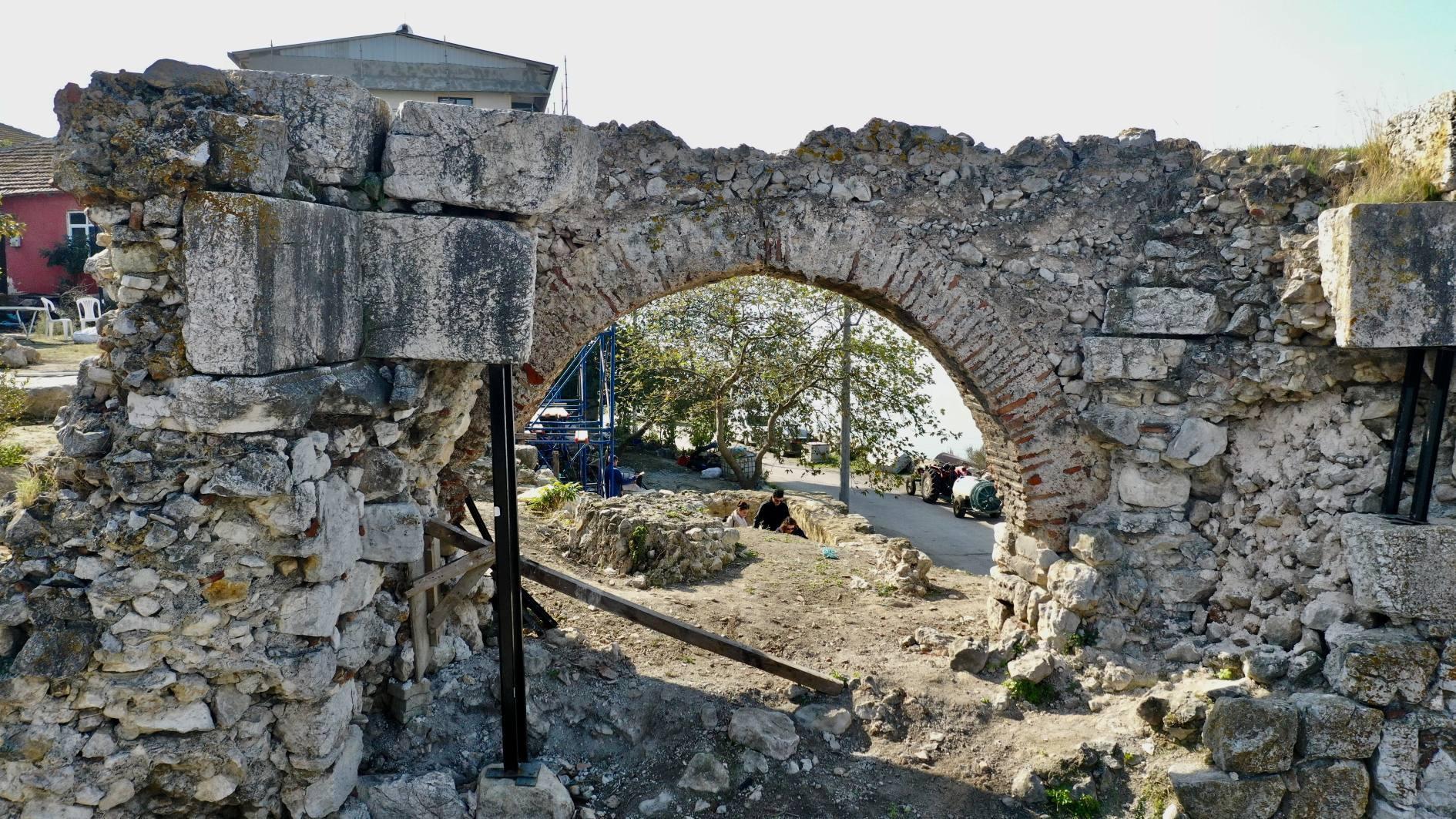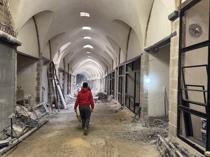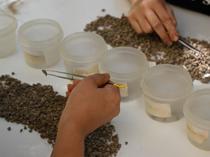Silk workshop unearthed in castle excavation
BURSA

Archaeologists have unearthed an ancient silk workshop in the “Simitçi Castle” area during excavations at the ancient city of Apollonia ad Rhyndacum, located in the Gölyazı neighborhood of Bursa’s Nilüfer district— one of Europe’s most scenic towns.
The discovery is expected to shed new light on the region’s Hellenistic-period settlement.
Excavations have been ongoing since July 4 in the preserved fortification walls of the ancient city, which consists of three interconnected landmasses that were fully surrounded by walls during the Hellenistic period. The project is sponsored by the Nilüfer Municipality.
Archaeologists determined that the area was used as a raw silk workshop in the first half of the 19th century after identifying numerous large nails and structural remains suggesting the presence of vats associated with silk production.
Professor Derya Şahin, the excavation director from Bursa Uludağ University’s Faculty of Arts and Sciences' Archaeology Department, said that 4.57 meters of the city walls’ original 9-meter length have been preserved and four of its seven towers remain standing.
Şahin said they first intervened when large reused blocks in the arched structure collapsed in December 2023. “We immediately took the necessary steps and notified the authorities. It was decided that excavation and restoration should be prioritized, and we began work after signing the required protocol,” she said.
She noted that the team started in the area known as “Simitçi Castle,” a name also used in academic literature. “The terms ‘castle’ and ‘tower’ are somewhat mixed up in both academic and local usage. In fact, there are four towers placed between the walls for security purposes. One of these was named ‘Simitçi Castle,’ probably because the arched structure resembles a simit [Turkish bagel]. It was also once known locally as a simit bakery,” Şahin explained.
She added that the team first cleared the site. “We removed around three truckloads of garbage. Because the retaining wall behind the terrace had weakened, basic repair and conservation works were needed. We reinforced weak points using filling materials and metal supports to stabilize the arched structure. The joints are now being completed and work is ongoing,” she said.
Şahin said the earliest phase of the city walls dates back to the late 4th century B.C. and that the structure had multiple uses over time. “The most important finding is that, based on archaeological evidence, the area was used as a silk production workshop in the early 19th century. The discovery of many nails, vats used in silk processing and other related artifacts clearly indicates this. We know that Gölyazı was historically a major center for silk production and trade, remaining active in this field until quite recently,” she said.
Şahin added that basic repair and conservation work is scheduled for completion by Nov. 28, after which a large-scale restoration project will begin.
















